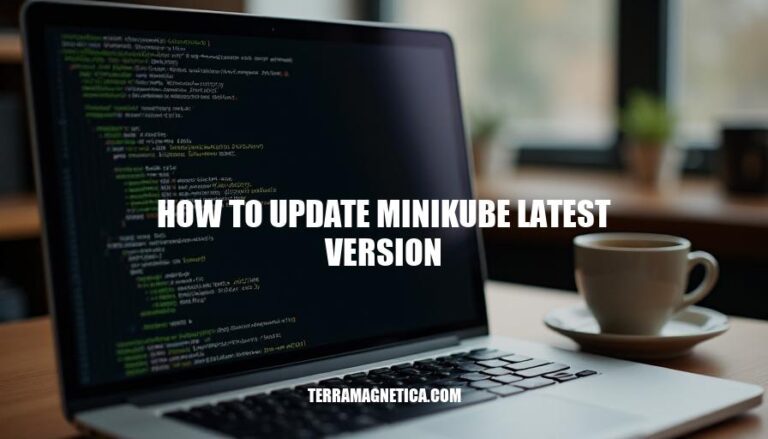


Keeping Minikube updated to the latest version is crucial for several reasons.
Overview:
Minikube is a tool that sets up a local Kubernetes cluster on macOS, Linux, and Windows. Regular updates ensure that you have access to the latest features, security patches, and performance improvements.
Benefits of Updating:
By keeping Minikube up-to-date, you ensure a secure, efficient, and seamless development workflow.
: Minikube Documentation
: Minikube Update Check
Open your terminal.
Run the following command:
minikube version
Expected output:
minikube version: v1.34.0
commit: 210b148
This will display the current version of Minikube installed on your system.
Here are the steps to download the latest Minikube version for different operating systems:
curl -LO https://storage.googleapis.com/minikube/releases/latest/minikube-linux-amd64
chmod +x minikube-linux-amd64
sudo mv minikube-linux-amd64 /usr/local/bin/minikube
curl -LO https://storage.googleapis.com/minikube/releases/latest/minikube-darwin-amd64
chmod +x minikube-darwin-amd64
sudo mv minikube-darwin-amd64 /usr/local/bin/minikube
Invoke-WebRequest -OutFile minikube.exe https://storage.googleapis.com/minikube/releases/latest/minikube-windows-amd64.exe
minikube.exe to a directory that is included in your system’s PATH.These commands will help you get the latest version of Minikube installed on your system.
Here are the step-by-step instructions to install Minikube on different operating systems:
C:\Program Files\Minikube).minikube start --driver=hyperv
/bin/bash -c "$(curl -fsSL https://raw.githubusercontent.com/Homebrew/install/HEAD/install.sh)"
brew install minikube
minikube start --driver=hyperkit
curl -LO https://storage.googleapis.com/minikube/releases/latest/minikube-linux-amd64
sudo install minikube-linux-amd64 /usr/local/bin/minikube
sudo apt-get update
sudo apt-get install -y docker.io
minikube start --driver=docker
These steps should get Minikube up and running on your system.
Check the current version of Minikube:
minikube version
Update Minikube to the latest version (if needed):
minikube update-check
Verify the update by checking the version again:
minikube version
These commands will help you ensure that Minikube is up-to-date and confirm the update.
Here are some common issues you might encounter when updating Minikube to the latest version, along with solutions and troubleshooting tips:
Installation Failures
minikube update-check to verify the current and latest version.Network Issues
Driver Problems
minikube start --driver=<driver_name> to specify the driver explicitly.Configuration Conflicts
minikube delete and then minikube start.Enable Debug Logs
--alsologtostderr and -v=2 to increase log verbosity and see detailed output:minikube start --alsologtostderr --v=2
Check Logs for Errors
minikube logs
Verify Pod Status
kubectl get po -A
Gather VM Logs
minikube logs --problems
Post-Mortem Logs
find $TMPDIR -mtime -1 -type f -name "*minikube*" -ls 2>/dev/null
These steps should help you troubleshoot and resolve common issues when updating Minikube. If you encounter persistent problems, consider reaching out to the Minikube community for further assistance.
To ensure optimal performance, security, and compatibility with Kubernetes updates, it’s essential to keep Minikube up-to-date with the latest version.
The update process involves checking for available updates, downloading and installing the new version, and verifying its installation. Common issues that may arise during this process include installation failures due to missing dependencies or incorrect paths, network problems preventing component downloads, driver issues affecting VM startup, and configuration conflicts between existing settings and the new version.
To troubleshoot these issues, you can enable debug logs using `–alsologtostderr` and `-v=2`, check Minikube logs for errors with `minikube logs`, verify pod status with `kubectl get po -A`, gather VM logs with `minikube logs –problems`, and collect post-mortem logs from the temporary directory.
By following these steps, you can resolve common issues and ensure a smooth update process. If problems persist, consider reaching out to the Minikube community for further assistance.